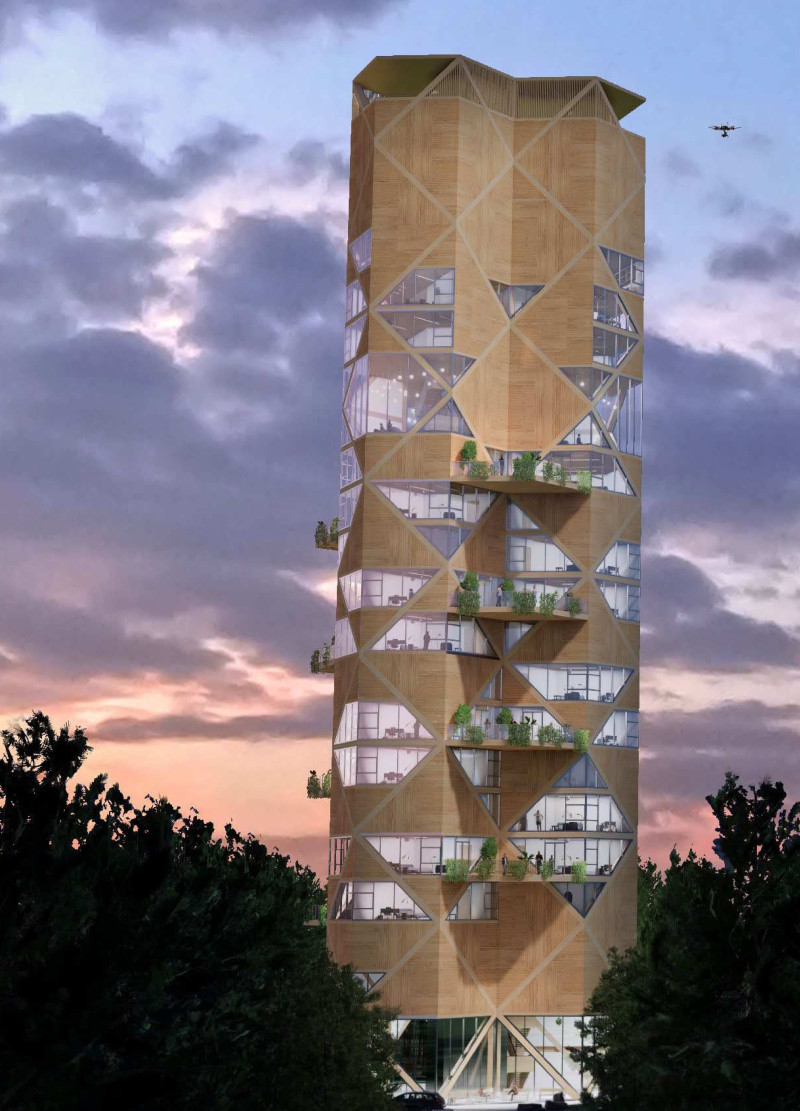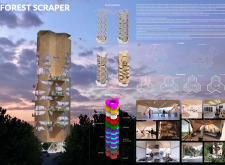5 key facts about this project
Functionally, the Forest Scraper supports a diverse range of activities, making it an essential hub for both residential and communal use. It houses private living spaces, research laboratories, communal work areas, educational facilities, and leisure spaces, all thoughtfully integrated within its vertical framework. This multifaceted approach allows the building to cater to a variety of needs while encouraging social interactions among its inhabitants, aligning with modern principles of community-driven design.
One of the standout features of the Forest Scraper is its impressive facade, which is characterized by a series of diamond-shaped wooden panels. This design not only enhances the structure's visual appeal but also serves functional purposes such as maximizing natural light penetration and reducing energy consumption. The use of engineered wood throughout the building exemplifies a commitment to sustainability; it provides strength while minimizing carbon footprints. Complemented by large glass sections, the facade creates a seamless connection between the interior and the surrounding environment, inviting nature into the living spaces and providing breathtaking views of the forest landscape.
The structural systems employed in the Forest Scraper are equally noteworthy, with a combination of a superstructure and a substructure designed to deliver both resilience and versatility. The superstructure, made primarily of engineered wood, creates a lightweight appearance, while the substructure, consisting of a steel frame, ensures stability and durability against environmental forces. This intelligent structural design also allows for flexibility in floorplate arrangements, maximizing usable space for various functions.
Another defining aspect of the project is its commitment to ecological integration. The Forest Scraper incorporates water capture and recycling systems, promoting efficient resource management and enhancing the building's sustainability. The green facade, which includes living plants, not only beautifies the structure but also contributes to biodiversity, reinforcing the project's connection to the natural environment. This thoughtful incorporation of greenery within the architectural scheme echoes the surrounding forest, further solidifying the project's identity.
The architectural ideas embodied in the Forest Scraper challenge traditional notions of urban high-rises, merging the concepts of tall structures with ecological consciousness. The design cleverly juxtaposes the verticality often seen in urban architecture with organic elements that draw inspiration from nature. This unique approach encourages a rethinking of how architectural spaces can function within the broader context of their environment.
For those interested in delving deeper into the specific design strategies, architectural plans, sections, and other related details of the Forest Scraper, further exploration of the project's presentation is highly recommended. Understanding the nuances of its architectural designs and the innovative approaches taken throughout the development can provide invaluable insights into the future of sustainable architecture and urban living.























